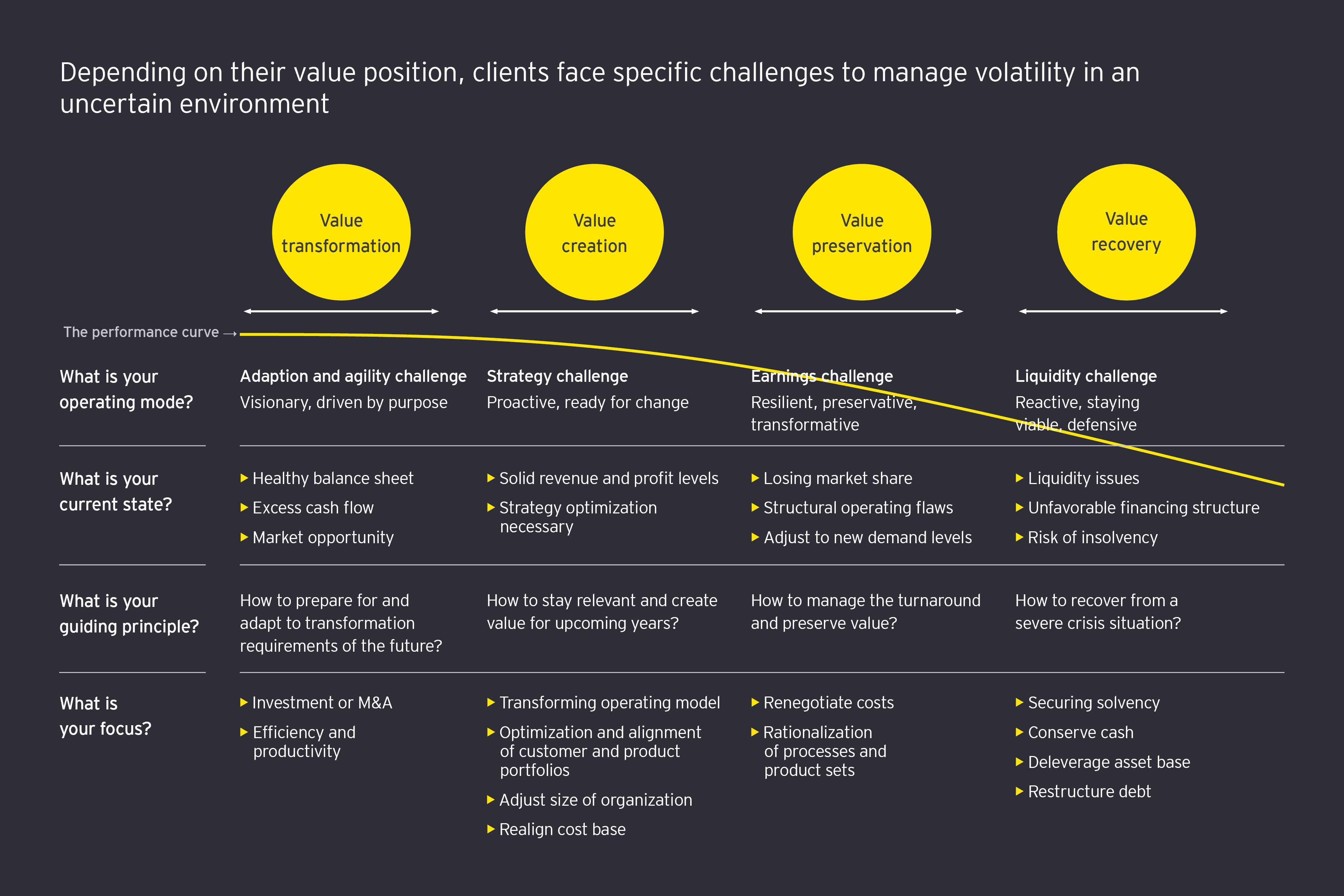The EY value framework provides a model for carrying out this process of self-assessment. It rests on four value pillars that reflect a performance curve. To respond to this period of volatility, leaders should consider where their organizations fall:
1. Value transformation
Visionary organizations driven by purpose with healthy balance sheets, excess cash flows and clear market opportunities must now prepare for the transformation requirements of the future.
2. Value creation
Proactive businesses with solid revenue and profitability, and which are ready for change, may still need to optimize their strategies and must consider how to stay relevant and create value in the years ahead.
3. Value preservation
Resilient and preservative businesses that are losing market share, facing structural operating flaws or adjusting to new levels of demand, must work out how to turn things around while preserving value.
4. Value recovery
Reactive and defensive businesses that are facing liquidity issues are dealing with unfavorable financing structures or are at risk of insolvency and must focus on recovering from crisis.
Importantly, self-assessment is not a one-off exercise. Leaders should position themselves as agile agents of change, who are constantly looking for new ways to move their organizations forward. They:
Assess
Establish planning processes, allow for regular or trigger-event based reassessments to identify areas requiring action, and integrate that work into key performance indicators.
Adapt
Use approaches and tools according to whether their businesses require value transformation, value creation, value preservation or value recovery, tailored to deliver their desired outcomes.
Anchor
Embed a drive for performance in the organization by adapting processes and key performance indicators. Performance becomes an attitude and is no longer just a program.
Each of these steps is crucial, but in this era of accelerated disruption – the paradigm shift to volatility – the challenge is to take them more quickly, more iteratively and with greater agility. Rather than passing through these steps in a linear sequence, business leaders with the right mindset will move to a journey of continual adaptation to operate successfully in the new normal and reinvent their tomorrow.


